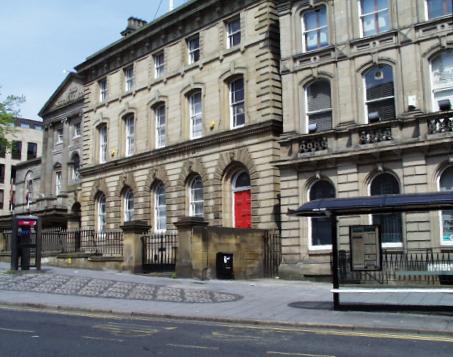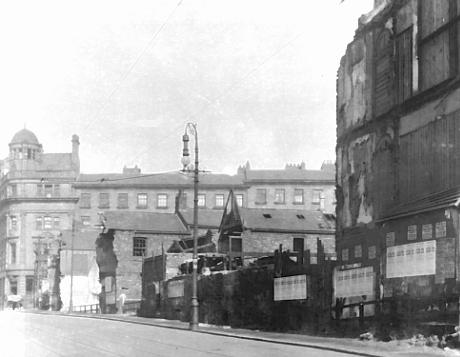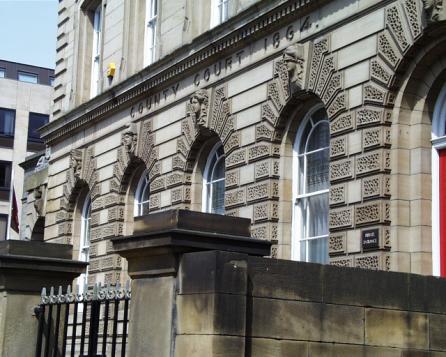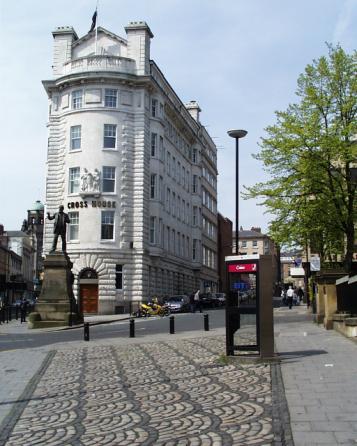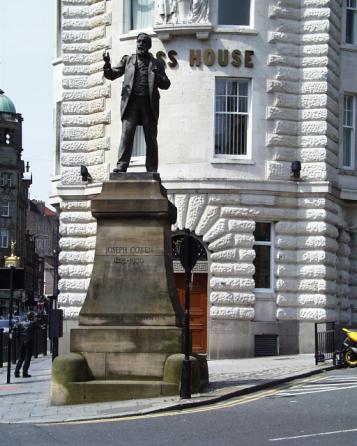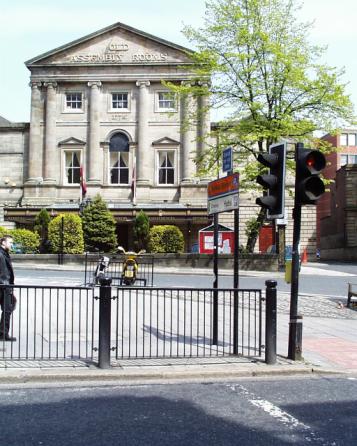|
City Centre Saturday 13th May, 2000 |
 |
|
The central building with the red door is the old County Court, situated at the foot of Westgate Hill, at its
junction with Fenkle Street, named after Nicholas Fenkell a wealthy merchant who lived in the city in 1577. The Old court building was built in 1864 and continued
to serve that purpose until the new courthouse at the Quayside took over in 1993. The building is now used to house the offices of David Gray and Company, Solicitors. |
 |
|
Here you can see the five females carved on the window keystones. The one under the date is justice wearing her blindfold. As
I am sure we all know, justice is not blind, and is seldom just. The actors on this stage used chambers in nearby Grainger Street, but now ply their trade from plush new premises at the Quayside.
|
|
|
|
|
 |
 |
|
Here is the junction of Fenkle Street and Westgate Raod, looking West. Cross House is currently the
home of Dickinson Dees Solicitors, but has been an insurance company headquarters.This building replaced an earlier Cross House that was damaged in a fire caused by highly inflammable film stock in
the adjacent Picture House that burned to the ground in 1919. Cross House was originally the home of Ralph Carr, who founded the first bank in Newcastle. During the 19th
Century it was the vicarage for the nearby St. John's Church. |
|
|
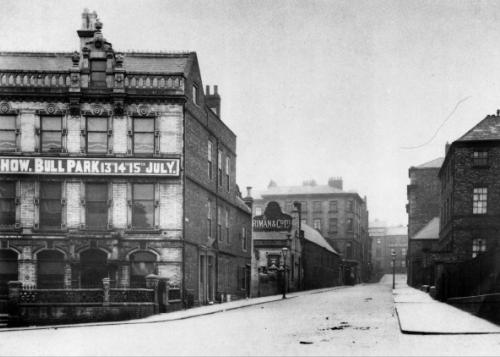 |
|
This is the same view in 1898, showing the old Cross House. You can see that there is no resemblance to its successor. At the time,
almost any building was prey to the advertising hoarding. You think the Internet is bad with its banners and pop-up consoles. Everywhere you look in photos of this period you see the buy me messages. Cross House was no
exception and here extolls a show being held at Bull Park, the then name for Exhibition Park. It was an area of the Town moor cordoned off for grazing the town bull. The
new name was given during 1887, Queen Victoria's Jubilee, but did not catch on in general until the 1920s. |
 |
This scene of devastation was all that remained of the Picture House after the fire. The building on the right
of this 1919 picture is Cross house, awaiting demolition. The Majestic Dance Hall, later converted to Bingo, replaced the ill fated cinema. |
|
|
 |
 |
|
Here stands a monument to Joseph Cowen, erected in 1906 by public subscription after his death. He lived
from 1826 to 1900, represented the town in Parliament from 1873 to 1886, and was the proprietor of the Newcastle Chronicle. Politics and newspapers have always made good bedfellows. See also Orson Welles'
"Citizen Kane".Joseph Cowen built the Tyne Theatre and Opera House in 1867 on the site of the Crown Inn yard. At the time it was the best equipped and largest theatre in the
north. It was later converted to the Stoll Cinema and was the first to show the new fangled talking pictures. It has now reverted to its original function as a leading theatre venue for the north.
|
|
 |
|
The Old Assembly Rooms in Fenkle Street, was built in 1776 and is one of the finest buildings in the
city. This venue is called the "Old Assembly Rooms" and replaces an even older version on the opposite side of the street, where the good folk of the time lived it up. Around 1736 New rooms were built in the
Groat Market, about a kilometre distant. The present building was erected at a cost of 6,000 pounds, with 129 public shareholders and the City Corporation holding 200.The architect, William
Newton, used the popular Georgian style and the great ballroom contains the finest plasterwork in the city, and sports seven massive chandeliers. |
|
|
|
 |
|
|
 |
|
If you should arrive here via a search, or be missing the navigation on the left hand side, click this button.
|
|

